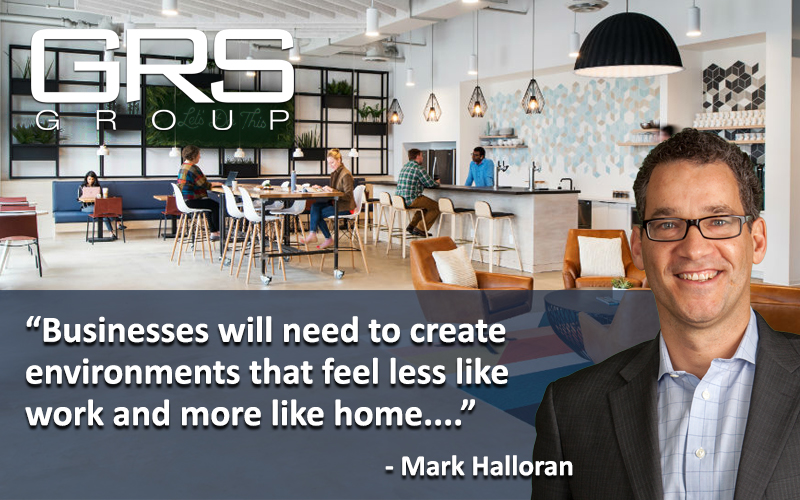Forget about dealing with a landlord or tenant market in the office sector of commercial real estate.
Instead of either, it’s seems more like an employee’s market when it comes to physical office space. With labor shortages in many industries, and unemployment at 45-year-record low, it sure seems like it takes more than a “Help Wanted” ad in the classifieds to attract good employees these days.
It might mean that companies need to completely re-envision the spaces where they reside and continue to make them adaptable to change. A recent Cushman & Wakefield report (download here), called “Workplace 2025.” Up front, the report says that the “old days” of de facto cubicles, fluorescent lighting, a nine-to-five work schedules and corner offices are over, and workers will expect their firms to adjust to their life-work-balance needs.
Part of this has to do with the fact that employees know they don’t need to come into an office to do many of their tasks, so businesses will need to create environments where people want to come into work, according to Cushman. Part of this involves establishing a sense of community that feels less like work and more like home. That can mean that some companies might offer nearby housing and retail amenities to their employees.
Customization to individual workers is also reportedly important, especially when it comes to stress reduction and overall health matters. Since healthcare costs are expected to double by 2024, according to Cushman, creating healthy work environments are beneficial to both employees and employers. This can be done by measuring movement and how electronics are impacting eyesight and hearing, among other preventative measures. These also be used to measure productivity and monitor what skills employees might need to brush up on.
Spaces will also be more adaptable to tasks at hand and changed accordingly. The Cushman report views this as more of “theater” in which the sets change depending on what they’re being used for. Real-time flexibility, and the ability to blend in co-working capabilities are listed as keys to future success.
Of course, as with everything nowadays, technology will play a formidable role. Virtual reality and cloud-stored data are predicted to be the norm, meaning there will be less space needed for hardware equipment. Company apps will reportedly even be able to tell when it’s time to take a meeting break after sensing participants’ bio-rhythms, and the same will go for the climate of a space. Most importantly, companies need to keep up with the latest technological advances and adapt them into the workplace because an environment seen by prospective employees as archaic and less advanced than the outside world will not be attractive.

